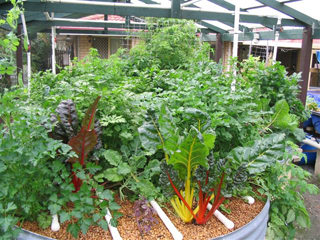
It is already a foregone conclusion that hydroponic gardening will become a primary source of agriculture in the future. It is currently expanding into third world nations through the efforts of charitable organizations and foundations to help provide nutritional food supplies to those in arid lands.
The lack of water for conventional agriculture is also expanding beyond third world nations and is looming on the horizon for some of the world’s most prolific bread baskets. Further, places where the lands have been over farmed are also subject to the same restrictions whether they have sufficient irrigation quantities in store. If the soil has been exhausted, it must rest. In the meantime, the people must eat.
Since the re-discovery of hydroponics by Dr. Gericke at the University of Berkeley in California in 1930, there has been a rapid increase in its universal application. The science of hydroponics has been applied in such remote environments as the Antarctic Circle and as far away as outer space.
Since hydroponic systems are able to produce more with less resources, it is the most logical solution being focused on with respect to ending world hunger. Third World countries may not have the pristine hydroponic systems such that NASA builds, but they make use of the materials at hand. Everything is possible with ideas coming from all over the globe.
Alfred Moser, inventor of the convenient plastic water bottle lamps that use refracting sunlight to illuminate interior structures claims that his simple invention can be used as the light source for rustic hydroponic farms. They may be using scrap metal and domestic water sources, but it works.
Possibly the greatest challenge facing famine-stricken areas is the distribution of surplus food. Improving this infrastructure means taking on the many logistical, sociological and religious challenges. The traditional approach of many organizations including UNICEF dedicating themselves to trying to unify efforts of what must comprise literally thousands of agricultural experts and exorbitant amounts of money and material has not provided the answer. The latest super-food, while an immediately useful form of protein for many suffering from malnutrition is more of a Band-Aid approach.
With attention from the Global Forum for Innovations in Agriculture (GIFA), participation from over 20 NGOs and such heavy hitters as the Gates Foundation, CGIAR and Aga Khan Development Network, this effort is benefiting from the best ideas from top international experts as well as the key movers and shakers in the realm of public, private and non-profit policy makers. In all efforts to date, one thing remains clear: the efforts of volunteers is essential to teaching and helping native farmers learn how hydroponic agriculture is possibly the most viable solution for soil-free, chemical-free, highly productive farming.






















Recent Reviews